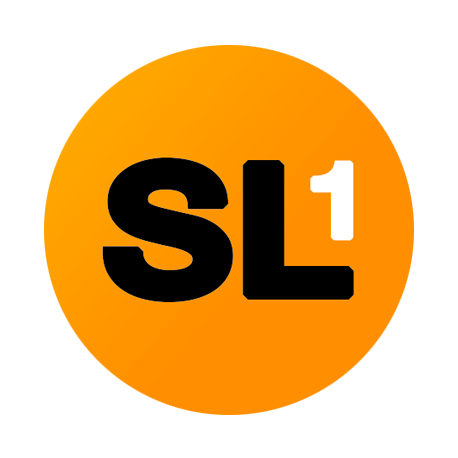Using AI To Write Blog Posts

Artificial Intelligence (AI) has transformed many industries, and blog writing is no exception. Leveraging AI for blog writing can enhance content quality, boost productivity, and optimize SEO performance.
- AI For Blog Writing
- Writing Personal Blog Posts With AI
- Writing Professional Blog Posts With AI
- Writing Guest Posts With AI
Here are 10 general tips on using Ai to write blogs followed by a comprehensive looking at using AI for blog writing.
#1 Conduct Thorough Research
Before diving into AI-generated content, it's crucial to research the topic thoroughly. This foundational knowledge helps you identify and correct mistakes, adjust the direction of the article, and ensure the content's accuracy. Understanding the topic allows you to guide the AI effectively, ensuring the generated content meets your standards.
#2 Act as a Copy Editor
While AI can generate content, it's essential not to rely on it entirely. Your role as a copy editor is to guide the AI, ensuring the final output is coherent, accurate, and aligned with your voice and style. This human oversight is crucial to maintaining the content's quality and relevance.
#3 Utilize AI for Various Tasks
AI tools can assist with multiple aspects of content creation, such as brainstorming blog topics, drafting intros and conclusions, suggesting engaging headings and titles, summarizing key takeaways, analyzing tone, and connecting ideas into a coherent narrative. This multifaceted assistance can streamline your content creation process and enhance productivity.
#4 Choose the Right AI Tools
Several AI tools can aid in content generation. Some of the best include ChatGPT, known for its versatility and accuracy, as well as Writesonic, Jasper, CopyAI, Anyword, and Frase. Each of these tools offers unique features suitable for different content creation tasks, significantly impacting your workflow and content quality.
#5 Customize Your Prompts
To get the best results from AI, customize your prompts by specifying the content type, desired tone, key points to cover, and other relevant details. Experiment with different prompts to see what works best for your needs. Tailoring prompts effectively guides the AI to produce more relevant and accurate content.
#6 Edit and Refine AI-Generated Content
Editing is a crucial step in the content creation process. Refine and customize AI-generated text to ensure it aligns with your brand voice and meets the expectations of your audience. This human touch is necessary to make the content relatable and engaging.
#7 Maintain Clear Instructions
When working with AI, provide clear and complete instructions. Specify the desired tone, type of content, context, and target audience. This clarity helps the AI generate more accurate and relevant content.
#8 Check for Redundancy
AI-generated content can sometimes be repetitive. Look for paragraphs that convey the same idea in different words and streamline them to improve readability and conciseness.
#9 Personalize the Text
Stand out from other AI-generated content by personalizing the text. Add your unique insights, experiences, and style to make the content engaging and unique for your readers.
#10 Ethical Considerations
It is vital to use AI ethically. Always fact-check AI-generated content, avoid plagiarism, and ensure you provide new value to your readers. Label AI-generated content appropriately and review the output for accuracy and bias.
AI Blog Posts Writing: A Complete Guide
Artificial Intelligence (AI) has transformed many industries, and blog writing is no exception. Leveraging AI for blog writing can enhance content quality, boost productivity, and optimize SEO performance. This guide will delve into the benefits, tools, and best practices for using AI in blog writing, providing you with actionable insights to harness this powerful tool effectively.
Benefits of Using AI in Blog Writing
- Speed and Efficiency
- Improved Productivity
- Enhanced Content Quality
AI can dramatically speed up the blog writing process. Tools like ChatGPT and Jasper can generate a first draft in minutes, allowing you to focus on refining and adding a personal touch. This efficiency is especially beneficial for business owners and content agencies looking to produce a high volume of content without compromising on quality.
AI tools streamline the content creation process, from generating content ideas to writing and editing. This can free up time for more strategic tasks, such as planning content calendars and conducting in-depth research.
AI can help improve the quality of your content by providing suggestions for better structure, grammar, and readability. Tools like Grammarly and Hemingway Editor enhance clarity and coherence, ensuring your blog posts are polished and professional.
How AI Can Assist Bloggers
#1 Generating Content Ideas
AI tools can brainstorm blog post ideas based on trending topics and keywords. For instance, using keyword research tools like Ahrefs or SEMrush in conjunction with AI can help identify high-traffic, low-competition keywords, providing a solid foundation for your content strategy. Additionally, AI can analyze your existing content and suggest new topics that align with your audience's interests and search behavior, ensuring you stay relevant and engaging.
#2 Writing Assistant Tools
Writing assistants such as Writesonic and Frase can generate entire blog posts, including introductions, conclusions, and everything in between. These tools can also create compelling meta descriptions, helping improve your content's SEO performance. Moreover, they can adjust the tone and style of the writing to match your brand voice, ensuring consistency across all your content pieces.
#3 AI-Powered Content Creation
AI can generate complete articles, social media posts, and even detailed outlines for long-form content. This capability ensures you have a structured starting point, which can be particularly useful for tackling complex topics or lengthy blog posts. Furthermore, AI can help maintain a consistent posting schedule by quickly generating drafts, allowing you to focus on refining and adding personal touches to the content.
AI-Generated Content vs. Human-Written Content
AI-generated content offers speed and efficiency but may lack the nuance and creativity of human writing. It can sometimes produce generic or repetitive content, which requires careful editing and personalization to meet high-quality standards.
The Role of Human Writers in Blogging
Human writers are essential for injecting creativity, unique perspectives, and emotional resonance into blog posts. While AI can handle routine tasks and generate drafts, human oversight ensures the content is engaging and relevant to the target audience.
How To Create Engaging and High-Quality Content with AI
#1 Incorporating Creativity with AI
AI can assist in breaking down complex ideas and connecting random concepts into a coherent piece, but human creativity is crucial for making content unique and engaging. Use AI as a starting point and build upon it with your insights and storytelling skills. This combination of AI and human creativity can result in content that is both informative and compelling, capturing the attention of your target audience while maintaining a unique voice.
#2 Content Types and Formats
AI tools can generate various content types, including blog posts, product descriptions, and social media updates. They can also help create different formats such as listicles, how-to guides, and in-depth articles, catering to diverse audience preferences. Additionally, AI can analyze performance data to suggest the most effective content types and formats for engaging your audience and achieving your business goals.
#3 Long-Form Content Generation
AI can efficiently produce long-form content by generating detailed outlines and expanding on key points. This is particularly useful for creating comprehensive guides, whitepapers, and case studies that require extensive research and elaboration. Furthermore, AI can help ensure that the content remains coherent and logically structured throughout, making it easier for readers to follow and understand complex information.
How To Streamline the Content Creation Process with AI
#1 Content Workflow Automation
AI can automate various aspects of the content creation workflow, from topic generation to final edits. Tools like ContentBot and Jarvis can manage multiple stages of content production, ensuring consistency and saving time.
#2 Content Calendar Management
AI tools can help plan and manage content calendars by predicting optimal publishing times and suggesting timely topics based on current trends and audience interests.
#3 Content Repurposing with AI
AI can assist in repurposing content by summarizing long articles, creating social media snippets, and generating related blog posts. This maximizes the value of your existing content and extends its reach across different platforms.
SEO Optimization with AI
#1 Keyword Research and Analysis Tools
AI-powered tools like Frase and MarketMuse analyze vast amounts of data to identify competitive and relevant keywords. These tools can help you create content that ranks well in search engines by targeting the right keywords and structuring your content effectively.
#2 SEO Content Generator
AI can generate SEO-optimized content by incorporating target keywords naturally and suggesting improvements for better search engine visibility. Tools like Surfer SEO integrate with AI writers to ensure your content aligns with SEO best practices.
#3 AI-Powered SEO Optimization Tools
Advanced AI tools offer features such as real-time SEO analysis, content gap identification, and backlink suggestions, helping you enhance your content's search engine performance.
Using AI-Driven Blog Writing Tools and Software
Exploring Content Generation Tools
There are numerous AI-driven tools beyond ChatGPT designed to assist with various writing tasks, from generating ideas to writing full articles. These tools help maintain a steady content output while ensuring high-quality standards, making them invaluable for professional bloggers aiming to produce consistent and engaging blog content.
Reviewing Content
Regularly review and refine AI-generated content to ensure it aligns with your brand voice and meets your audience's expectations. Human oversight is crucial for maintaining content quality and avoiding potential issues with AI-generated text, such as inaccuracies or lack of engagement.
Making Content from Scratch
AI tools can create content from scratch based on your inputs and specifications. This includes generating blog posts, social media updates, and even product descriptions, providing a versatile solution for various content needs. These tools can help streamline your content creation process, allowing you to focus on strategy and personalization.
Avoiding Duplicate Content
Ensure your AI-generated content is unique by using plagiarism detection tools and regularly updating your content strategy. Avoiding duplicate content is essential for maintaining SEO performance and credibility, which is critical for professional bloggers who rely on organic search traffic to grow their audience.
Enhancing Creativity and Originality in Blog Writing with AI
Balancing AI and Human Creativity
While AI can handle repetitive tasks and generate drafts, human creativity adds the necessary depth and originality to blog posts. Use AI as a tool to enhance your blog writing, not replace it. The synergy between AI-generated content and human insight ensures that your blogs remain engaging and distinctive, reflecting your unique voice and perspective.
Developing Unique Blog Content Ideas
AI can provide a wealth of blog content ideas by analyzing trends and suggesting topics. However, it's up to you to select and refine the most relevant and unique ones. Combine AI suggestions with your expertise and understanding of your audience to create standout blog content that resonates and engages readers.
Ensuring High-Quality Blog Posts
Regularly edit and personalize AI-generated content to maintain high standards for your blog. Incorporate real-world examples, case studies, and personal anecdotes to add value and authenticity to your blog posts. This approach not only enhances the quality of your content but also builds trust and credibility with your audience.
Conclusion
AI is a powerful tool for enhancing blog writing, offering benefits like increased efficiency, improved productivity, and enhanced content quality. By combining AI capabilities with human creativity and oversight, you can produce high-quality, SEO-optimized content that engages your audience and drives results. Embrace AI as a collaborative partner in your blog writing process, and stay updated on the latest tools and best practices to continually refine and improve your content strategy.





Member discussion